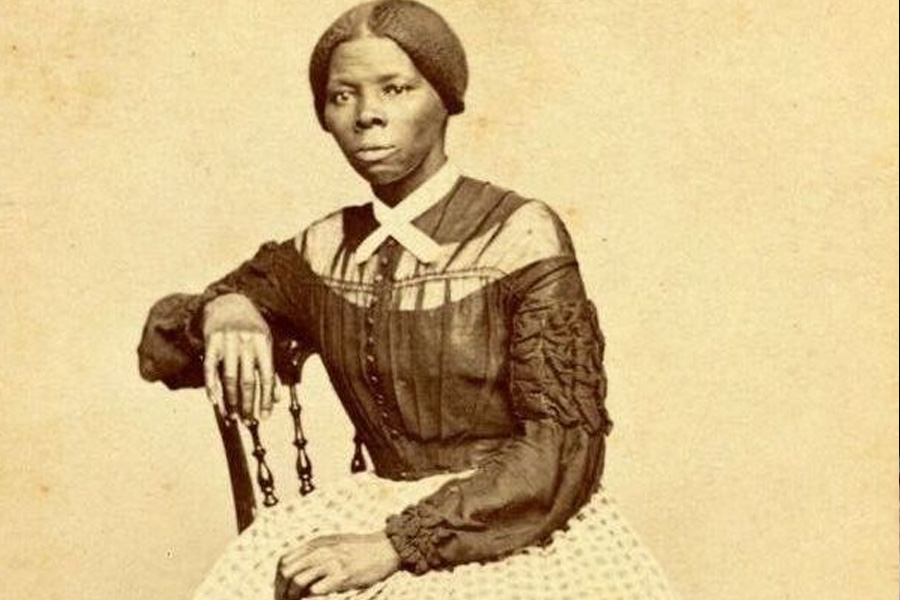Basic Information
| Field | Details |
|---|---|
| Full name | Mariah Ritty Ross |
| Also recorded as | Mary; Rhody (variant in some records) |
| Born | Circa 1811 |
| Place of birth | Dorchester County, Maryland, United States |
| Parents | Benjamin “Ben” Ross (c. 1787–c. 1871); Harriet “Rit” Greene Ross (c. 1790s–March 9, 1880) |
| Siblings (total) | Nine children in the Ross family, including Linah, Mariah, Robert, Araminta “Harriet,” Ben Jr., Henry, Soph, Rachel (probable/variant), Moses |
| Status at birth | Enslaved |
| Enslavers | Pattison/Brodess families (including Mary Pattison Brodess; Edward Brodess) |
| Sale South | Around 1825 (age ~14), sold by Edward Brodess to a trader bound for Georgia; fate unknown after sale |
| Known residences | Maryland (childhood); likely Deep South after 1825 |
| Spouse/children | None documented |
| Cultural notes | Oral family tradition suggests Ashanti roots through paternal line (unverified) |
| Death | Unknown (no surviving record) |
| Notability | Older sister of Harriet Tubman; emblematic of family separations under American slavery |
A Childhood on Maryland’s Eastern Shore (c. 1811–1825)
Mariah Ritty Ross was born into bondage on the tidal marshlands of Maryland’s Eastern Shore, where pine forests met fields and the rhythms of work beat louder than the wind. Her parents, Ben Ross and Harriet “Rit” Greene Ross, were enslaved on neighboring estates, their union sustained by courage and stolen visits. Ben, a skilled timberman and trusted hand at Peter’s Neck, belonged to Anthony Thompson; Rit labored under the Pattison and Brodess families, known for her strength and iron resolve.
Childhood under chattel slavery was a narrow bridge to adulthood. By age 6 or 7, children ran errands or tended younger siblings. By 10, many, like Mariah, were sent to labor in the fields or in domestic service. In this world, wages didn’t exist; only quotas and punishments did. The family’s bond—nine children in all—was a fragile fortress against the ever-present threat of sale.
1825: The Sale South
Around 1825, when Mariah was roughly 14, Edward Brodess sold her to a slave trader headed to Georgia. For enslaved teenagers in the Chesapeake, the domestic slave trade was a roaring river: between 1790 and 1860, hundreds of thousands were forced from the Upper South to the Deep South. A girl of Mariah’s age might fetch $300–$500 in Maryland’s market—figures that reveal the cold arithmetic of human trafficking.
Her sale was not an isolated act. Three of the Ross sisters—Linah, Mariah, and Soph—were sold South across the 1820s, their names disappearing into ledgers and distance. Harriet Tubman would later point to these separations as flares in the night sky: signs of danger, and calls to act. The day Mariah vanished into a trader’s coffle, a branch of the family tree was severed and carried downstream.
Family Ties Stretched and Snapped
- Ben Ross (father) earned his freedom in 1840 under a delayed provision from his enslaver’s will. He purchased land, tried to protect his family, and later joined them in Auburn, New York, dying around 1871.
- Rit (mother) fought fiercely for her family and eventually gained freedom in 1857 after legal battles. She died on March 9, 1880.
- Linah (oldest sister, b. 1808) was sold South in the early 1820s; later life is uncertain, with reports she may have married and had a child.
- Soph (sister, b. c. 1813) was sold to Mississippi; her fate after sale is unknown.
- Robert, Ben Jr., and Henry (brothers) wavered during a 1849 escape attempt with Harriet; two were later sold South, and one is believed to have reached freedom.
- Moses (youngest brother, b. c. 1832) lived to see emancipation in 1865.
- Harriet (b. 1822) escaped in 1849 and became a legendary conductor on the Underground Railroad, Civil War scout and nurse, and lifelong advocate for freedom.
- Rachel appears in some accounts as a separate sister; records are sparse and occasionally conflated with other names.
Ross Siblings at a Glance
| Name | Approx. birth | Relation to Mariah | After 1825 |
|---|---|---|---|
| Linah | 1808 | Older sister | Sold South; life course unknown (reports of marriage/child exist but unconfirmed) |
| Mariah Ritty | c. 1811 | — | Sold c. 1825 to Georgia trader; fate unknown |
| Robert | c. 1811–1816 | Brother | Attempted escape 1849; believed sold South later |
| Soph | c. 1813 | Younger sister | Sold to Mississippi; fate unknown |
| Araminta “Harriet” | 1822 | Younger sister | Escaped 1849; renowned abolitionist and Civil War veteran |
| Ben Jr. | c. 1823 | Younger brother | Returned after 1849 attempt; later believed to have reached freedom |
| Henry | c. 1825 | Younger brother | Later sold South; fate unknown |
| Rachel | c. 1820s | Sister (probable) | Fragmentary records; may be a conflated identity |
| Moses | c. 1832 | Youngest brother | Lived to emancipation; postwar life quiet and little documented |
Harriet Tubman’s Road, Traced Against Mariah’s Silence
Harriet’s epochal path—her 1849 escape, her returns to guide dozens more to freedom, her service during the Civil War, and her activism afterward—casts a long light over the family. But that light falls on absences, too. The losses of Linah, Mariah, and Soph helped shape Harriet’s resolve. Where Harriet’s story fills pages, Mariah’s is a margin note; where Harriet’s deeds echo in history, Mariah’s life is a quiet room, door closed, candle snuffed by sale.
Timeline: The Ross Family in Dates
| Year | Event |
|---|---|
| c. 1787–1790 | Ben Ross born in Dorchester County, Maryland |
| c. 1790s | Rit born in Dorchester County |
| 1808 | Birth of Linah |
| c. 1811 | Birth of Mariah Ritty |
| 1813–1823 | Births of Soph, Robert, Harriet (1822), Ben Jr. (1823) |
| c. 1824–1825 | Birth of Henry (~1825); family separations intensify |
| c. 1825 | Mariah sold to Georgia trader at ~14; Soph and Linah sold South in this period |
| 1840 | Ben freed by provision of former enslaver’s will |
| 1849 | Harriet escapes; abortive escape with brothers |
| 1857 | Rit gains freedom; later relocates with family |
| 1861–1865 | Civil War; emancipation |
| c. 1871 | Ben dies in Auburn, New York |
| 1880 | Rit dies in Auburn |
| 1913 | Harriet dies in Auburn |
Work Without Wages: What “Career” Meant Under Slavery
To ask about Mariah’s “career” is to encounter the cruel grammar of slavery. Her work—childcare, domestic chores, field labor—generated wealth for others and none for herself. Teenage girls in the Chesapeake could be priced at $300–$500 in the 1820s, sums that appraise bodies rather than skills. After her sale, Georgia’s cotton and rice frontiers likely demanded dawn-to-dusk labor under overseers’ whips, with meager rations and no lawful family life. The ledger lines where a résumé should be attest to a system that turned human stories into inventory.
Records, Silences, and Memory
We know Mariah’s name through scattered county documents and family memory carried forward in biographies and oral histories. Variants like “Mary” or “Rhody” underscore the fragility of records for enslaved people, whose names were misspelled, changed, or omitted by others. After 1825, the trail goes cold. That silence is not absence of a life; it is evidence of a system designed to erase it.
Why Mariah Matters
Mariah Ritty Ross stands for millions whose lives were fragmented by the domestic slave trade. Her story—brief in the archives, vast in implication—reminds us that Harriet Tubman’s heroism rose from a family whose branches were lopped off and sold. To tell Mariah’s story is to restore, however partially, a name to a history that tried to forget it.
FAQ
Who was Mariah Ritty Ross?
She was an enslaved girl from Dorchester County, Maryland, born circa 1811, and the older sister of Harriet Tubman.
What happened to her?
Around 1825, at about age 14, she was sold to a trader bound for Georgia; her fate afterward is unknown.
How is she connected to Harriet Tubman?
She was one of Harriet’s older sisters, part of the large Ross family that shaped Harriet’s resolve and mission.
Did she marry or have children?
No marriages or children are documented; she was sold young and disappeared from records.
Why are there so few records about her?
Enslaved people’s lives were often reduced to sales and inventory entries, and the interstate slave trade severed paper trails along with families.
Who were her parents?
Benjamin “Ben” Ross, a skilled timberman later freed in 1840, and Harriet “Rit” Greene Ross, who gained freedom in 1857.
How many siblings did Harriet Tubman have?
Nine Ross children are counted in family memory and records, including Mariah; some identities appear under variant names.
Why is Mariah historically significant?
Her story exemplifies the human cost of the domestic slave trade and illuminates the context from which Harriet Tubman emerged.
Is there a grave or memorial for Mariah?
None is known; like many sold South, her resting place has not been identified.
What did “being sold South” mean?
It meant forced removal from the Upper South to the Deep South, where labor demands and conditions were harsher and family reunions exceedingly rare.



